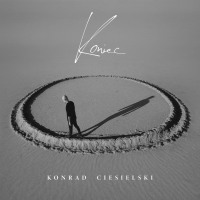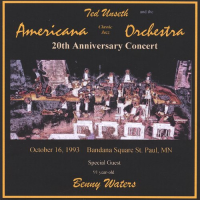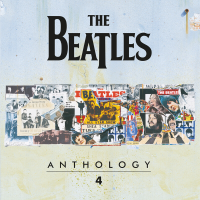Home » Jazz Articles » Extended Analysis » Eberhard Weber: Eberhard Weber: Colours
Eberhard Weber: Eberhard Weber: Colours
German bassist Eberhard Weber was already a known entity in Europe when he released his ECM debut, The Colours of Chloë in 1974. The double-bassist was a longtime musical companion of Wolfgang Dauner (even appearing on the keyboardist's one and only ECM album, 1970's Output), an in-demand session player on albums ranging from guitarist Joe Pass' Intercontinental (BASF, 1970) to violinist Stephane Grappelli's Afternoon in Paris (MPS, 1971). But with Chloë, the bassist came forth with a bold statement that announced a new voice on the contemporary jazz scene.
Weber brought a distinctive compositional style—as influenced by European classicism and contemporary minimalism as it was swing and improvisation—to the table. The music had, at times, an ethereal quality that, despite the appearance of pianist Rainer Brüninghaus' synthesizer, was more spacious, more temporally unfettered and absolutely distanced, in its attention to space and nuance, from fusion music of the time. Equally important, Weber introduced, on the side-long "No Motion Picture," a custom-designed and unmistakable electro-bass; a five-string, electric upright bass that sounded like a cross between a double-bass and a fretless electric.
The combination of Weber's unique sound and compositional approach made Chloë a jazz hit, garnering the prestigious German Grosser Deutcher Schallplattenpreis in 1975, and gaining the attention of musicians abroad, including fellow ECM artists vibraphonist Gary Burton, guitarists Ralph Towner and Pat Metheny, and saxophonist Jan Garbarek—not to mention Jaco Pastorius, the American bassist who was also redefining the role of the instrument in the fusion group Weather Report. Weber's approach couldn't have been more different than that of Pastorius, but the two shared both innovation on their instruments and—just as key, distinctive and, ultimately, memorable— compositional approaches that made their writing as groundbreaking as their playing.
The result of Chloë's success was a near-overnight leap in visibility for Weber, as he found himself recruited for other albums including Burton's Ring (ECM, 1974) (which also announced Metheny's arrival to an international audience), Towner's Solstice (ECM, 1975) and, a couple years later, Metheny's sophomore effort, Watercolours (ECM, 1977). Following an American tour with Burton, Weber was faced with a burning desire to take Chloë on the road and see where the music could go, and so he recruited Brüninghaus, Norwegian drummer Jon Christensen (who he'd met on Solstice, along with Garbarek) and, perhaps most importantly, American expat saxophonist Charlie Mariano, a musician with not only a deep command of the jazz vernacular, but an interest in music farther afield, including the music of India, adding exotic instruments like the South Indian nagaswaram to his more traditional alto and soprano saxophones.
The result was a group that would become known as Colours. With one key personnel change—the replacement of Christensen with British drummer John Marshall (Soft Machine, Nucleus)—Colours became a popular touring entity, traveling through Europe, North America and Australia, and recorded three albums for ECM—1976's Yellow Fields (with Christensen), 1978's Silent Feet and 1980's Little Movements (both with Marshall). All three records rank amongst the bassist's finest, as well as being undisputed classics of the ECM label, and while available on CD over the years, have been out of print for some time. Colours brings all three discs back into print as part of ECM's Old & New Masters series, in a budget priced box set that includes an in-depth essay by ECM historian Michael Tucker and previously unavailable photos. None of the CDs have been remastered; an intentional decision by ECM for the Old & New Masters series, remastering only when the label feels the music required it. In the case of Yellow Fields, Silent Feet and Little Movements, the sound is so pristine and transparent that remastering would clearly provide little, if any, benefit.
Yellow Fields (1976)
From the opening notes of "Touch," it's clear that Weber had moved the concepts introduced on Chloë both forward and into a more improvisationally rich space. As on Chloë, Weber layers bowed bass to create a rich orchestral palette over a rhythmic foundation from Christensen that's characteristically elastic and backbeat-driven. A long-form theme occupies much of its five-minute duration, with soloing discrete, but not defined in the conventional jazz tradition of head-solo-head. With Brüninghaus' synthesizer buried into the mix, the track (and the album) possess an unmistakably contemporary tone that, 33 years later, avoids the dated sonics of groups like Weather Report and Return to Forever.Weber made another early decision that would further distinguish the group: Mariano, best known as an altoist, was to primarily play soprano saxophone, though he would also introduce further individuality on the ebony, double-reeded nagaswaram, featured heavily on "Sand-Glass." A simple, repetitive bass line sets up the song's premise, an early example of Colours' remarkable ability to extemporize both individually and as a group. Everyone finds their moment in the spotlight, most notably Mariano's nasal nagaswaram and Brüninghaus' electric piano; but it's Colours' collective improvisational acumen that allows it to expand such a spare idea into nearly 16-minutes of trance-inducing wonder.
The title track would become, along with Chloë's title track, one of Weber's most memorable compositions (both covered by Burton on Ring and his 1977 ECM follow-up, also featuring Weber, Passengers) . But whereas Burton would take "Yellow Fields" at a considerable clip, Weber keeps the tempo moderate. Like "The Colours of Chloë," "Yellow Fields" possesses an opening theme, stated on Weber's uncannily vocal-like electro-bass, before leading into its main section, its complex changes setting into action a challenging navigational context for both Mariano (on soprano) and Brüninghaus—whose swirling electric piano, Weber's rhythm-heavy but equally contrapuntal electro-bass and Christensen's temporal elasticity, created a group sound as recognizable as Weather Report, but with less over attention to virtuosity, even though every member of Colours was, indeed, a stunning player. Keyboard player Joe Zawinul's growing interest in funk, and saxophonist Wayne Shorter's increasing cerebralism were juxtaposed with Weber's no less considered approach to writing, but with a truer collective improvisational approach that fit Zawinul's definition of "everybody solos and nobody solos" just as well...only differently.
Overlooked in Weber's oeuvre, perhaps, but one of the most definitive closing tunes on any of his records, "Left Lane" opens, like "Sand-Glass," with a simple premise: an eight-note bass pattern over two chords that still manages to provide Brüninghaus with plenty to work with for one of his most exciting yet thematically focused solos of the set. When Mariano emerges on soprano, doubled by Brüninghaus' synth, it's to deliver another memorable melody that dissolves into a duet for Weber and Brüninghaus (this time on acoustic piano)—an early example of the shared simpatico the pair would continue to explore on subsequent albums by Weber, and as co-members of Jan Garbarek's later groups beginning in 1988. Brüninghaus' classicism is especially evident when Weber drops out, making it curious that he's never achieved greater acclaim, despite two outstanding solo albums of his own— Freigeweht (ECM, 1981) and the award-winning Continuum (ECM, 1984). A final section, with Weber and Christensen driving a propulsive 9/4 section that soars with Mariano's soprano solo and some of Christensen's most viscerally exciting playing, leads into a final electric piano solo from Brüninghaus, before a repeated phrase, first on soprano, then overdubbed with nagaswaram, ascends skyward as the track brings Yellow Fields to a conclusive fade-out.
While Weber doesn't avoid the use of overdubbing to expand the album's soundscape, Yellow Fields was, and remains, a remarkable calling card from a group that's easily withstood the test of time.
Silent Feet (1978)
The increasingly busy Jon Christensen, who had become—after emerging in the early 1970s on albums by Garbarek and guitarist Terje Rypdal—ECM's de facto house drummer by this time left Colours in 1977, and was replaced by John Marshall. Marshall, a charter member of British trumpeter Ian Carr's Nucleus, as well as Robert Wyatt's ultimate replacement in Soft Machine, was the perfect recruit. Less inherently free than the Soft Machine that Marshall joined in 1972, and absolutely not the fusion group that it would become by 1975's Bundles (Harvest), when guitar icon-in-the-making Allan Holdsworth was enlisted, there were still some reference points that linked the British progressive group with Colours. Mariano's powerful soprano was an admittedly more lyrical alternative to Elton Dean's greater expressionism, but possessed a similar virtuosity and even greater stylistic breadth. While Colours was not a fusion group, per se, it did allow for a certain amount of rock energy and, with its use of electric keyboards, some textural references as well.What Marshall brings to Silent Feet, almost from the start of the opening "Seriously Deep," is more overt virtuosity, a more direct kind of energy and a considerable change in texture. As opposed to Christensen's dark, splashy cymbal work, Marshall's was more delicate; but once the 18-minute track makes its way into Mariano's first solo of the set, Marshall's more unbridled power becomes inherently clear, as he lifts the group's energy level beyond anything heard on Yellow Fields. That said, unlike Yellow Fields' similarly lengthy "Sand-Glass," "Seriously Deep" was compositionally developed, with themes coming and going between more decided solo sections. As a soloist, Weber had evolved considerably; while in later years he would turn to greater scripting, here he was on the ascent in his improvisational prowess, a lithe player combining dexterity and lyrical intent with visceral glissandi to make him, to this day, one of the instrument's great soloists, and one whose electro-bass permitted him a facility not available to the more unwieldy double-bass. He solos for four glorious minutes before turning things over to Mariano who, on soprano, again asserts his position as a player who, recently deceased, was well-known but absolutely not reaching the larger audience he deserved.
If Yellow Fields was the calling card, to coin a phrase of King Crimson's guitarist Robert Fripp, then Silent Feet was Colours' hot date; the entire first side a thrilling combination of power and grace, and another example of Brüninghaus' undervalued stature, as his accompaniment drives the soloists to greater heights alongside Marshall, while his solos continue to assert a marvelous integration of jazz-centric melodism, equally imbued with impressionistic classicism. Colours may have relied on Weber's compositions to create its context, but this was unequivocally a playing band, and one who clearly could transcend the sometimes sterile surroundings of the recording studio to create music that nearly jumps out of the speakers. Weber would later record two albums of largely solo bass, but in a group context of a more liberated bent, he has rarely surpassed his playing on Silent Feet.
Opening with another lengthy bass solo, but this time in another empathic duet with Brüninghaus, Weber again takes four minutes to bring the rest of the group in to state the title track's simple but, as ever, stunningly effective and memorable melody. When Weber played a 65th birthday concert in 2005 with a full symphony orchestra—documented on Stages of a Long Journey (ECM, 2007)—it was fitting that he chose the buoyant "Silent Feet" to open the performance, though in that case with Garbarek on saxophone. But here, the original stops on a dime after yet another potent solo from Mariano, moving into another segment of Weber's by now characteristically episodic approach to composition—a repeated 10/4 figure with a concluding rest that frames another singable melody, leading almost inevitably to a return to the song's optimistic main theme.
Mariano's flutes open the more abstract "Eyes That Can See in the Dark," Silent Feet's closer—and yet another example of ECM producer Manfred Eicher's remarkable ability to shape the narrative arc of an album to transcend the undeniable strength of its individual tracks. Five minutes of gradual emergence, as Mariano moves to saxophone and a long-toned theme doubled by Weber's arco bass, leads to an appealing waltz-time feature for Brüninghaus, his most impressive acoustic piano playing of the disc and the closest Colours ever gets to swing, while still retaining a rhythmic impact driven by Marshall; the perfect confluence of frenetic energy and delicate elegance. A fine closer to what has since become Colours' most popular disc.
Little Movements (1980)
Two years and plenty of touring would take place before Colours recorded its final disc, 1980's Little Movements, opening with another classic Weber composition that the bassist would revisit twice more—on his return to small ensemble playing following a 16-year hiatus on Endless Days (ECM, 2001) and Stages of a Long Journey. "The Last Stage of a Long Journey" sets the tone for Colours' most subdued record, though by no means an unimpressive one. Another hummable melody over changes that approach song form, "The Last Stage of a Long Journey" also finds Weber putting down his electro-bass and, for the most part, returning to double-bass. His upper register arco, in tandem with Mariano's soft soprano, creates a gentle harmonic backwash behind Brüninghaus' tender acoustic piano solo.Little Movements also distinguishes itself as the only Colours disc to feature a composition from someone other than Weber. Brüninghaus' "Bali" would become one of the group's most compelling live tracks; one that begins seemingly where "The Last Stage of a Long Journey" leaves off; a rubato opening of long tones and Mariano's spare soprano taking its time before heading into the album's first sign of greater energy, with the pianist's lyrical writing a strong dovetail for Weber's own. A backbeat-driven solo section for Mariano links Colours with another groundbreaking ECM group that merged styles, while avoiding the by now dirty word "fusion," Pat Metheny Group. But while Metheny's writing with keyboardist Lyle Mays would compare in its episodic nature and depth, Weber's—and, here, Brüninghaus'—created miniature suites of classical depth, with "Bali" returning to the minimalist references of The Colours of Chloë's "No Motion Picture," as Brüninghaus' synth, Weber's bowed bass and Marshall's bell-like cymbals create a foundation for a Mariano's serpentine melody and the gradual assertion of a backbeat-driven pulse. Here, more than anywhere else, Colours references some of the textural and compositionally complex qualities of progressive rock while avoiding all the pomp and excess.
 It's no surprise then, that while Little Movements was released in 1980, the radio broadcast of a 1981 Colours performance in East Germany would weigh more predominantly on material from Silent Feet and Yellow Fields. While the music on Little Movements still featured compelling solo work from its members, it signaled Weber's increasing shift towards structured composition, with none of its tracks approaching the collective abandon of "Seriously Deep." "A Dark Spell" is a restrained, mid-tempo tune, while "Little Movements," with assorted crashes, sound effects and gongs, revolves around a repetitive pattern and features some of the discs' most exuberant collective improv.
It's no surprise then, that while Little Movements was released in 1980, the radio broadcast of a 1981 Colours performance in East Germany would weigh more predominantly on material from Silent Feet and Yellow Fields. While the music on Little Movements still featured compelling solo work from its members, it signaled Weber's increasing shift towards structured composition, with none of its tracks approaching the collective abandon of "Seriously Deep." "A Dark Spell" is a restrained, mid-tempo tune, while "Little Movements," with assorted crashes, sound effects and gongs, revolves around a repetitive pattern and features some of the discs' most exuberant collective improv. The closing "'No Trees?' He Said" is, along with Yellow Fields' "Touch," a rare Colours track to clock in at a brief five minutes, and while it's another feature for Brüninghaus' fine acoustic piano work, it's largely through-composed, albeit with no shortage of interpretive freedom . Thematically another strong closer, it looks forward, more than any other Colours track, to Weber's predilection for scripting on Endless Days.
It may seem like the group ending on something of a whimper rather than a bang, but Little Movements, taken in context with the other discs in the Colours box, suggests that Weber may have had a relatively consistent group in mind when he first put one together to tour The Colours of Chloë, but he was not interested in standing still. From Yellow Fields's syntactic breaking of new ground to Silent Feet's greater exuberance and Little Movements' compositional focus, listening to the Colours box in sequence reveals a group of players unified in their leader's vision, but evolving over the course of its six-year existence. More importantly, in retrospect Colours emerges as a group that, avoiding the characteristics that ultimately time stamped its American counterparts, is just as significant as any of them.
Track Listing
CD1 (Yellow Fields): Touch; Sand-Glass; Yellow Fields; Left Lane.
CD2 (Silent Feet): Seriously Deep; Silent Feet; Eyes That See in the Dark.
CD3 (Little Movements): The Last Stage of a Long Journey; Bali; A Dark Spell; Little Movements; "No Trees? He Said.
Personnel
Eberhard Weber
bassCharlie Mariano
saxophone, altoRainer Bruninghaus
pianoJon Christensen
drumsJohn Marshall
drumsEberhard Weber: bass; Rainer Brüninghaus: keyboards (CD1), piano (CD2, CD3), synthesizer (CD2, CD3); Charlie Mariano: soprano saxophone, nagaswaram (CD1), flutes (CD2, CD3); Jon Christensen: drums (CD1); John Marshall: drums (CD2, CD3), percussion (CD3).
Album information
Title: Eberhard Weber: Colours | Year Released: 2009 | Record Label: ECM Records
Tags
PREVIOUS / NEXT
Support All About Jazz
 All About Jazz has been a pillar of jazz since 1995, championing it as an art form and, more importantly, supporting the musicians who make it. Our enduring commitment has made "AAJ" one of the most culturally important websites of its kind, read by hundreds of thousands of fans, musicians and industry figures every month.
All About Jazz has been a pillar of jazz since 1995, championing it as an art form and, more importantly, supporting the musicians who make it. Our enduring commitment has made "AAJ" one of the most culturally important websites of its kind, read by hundreds of thousands of fans, musicians and industry figures every month.
































